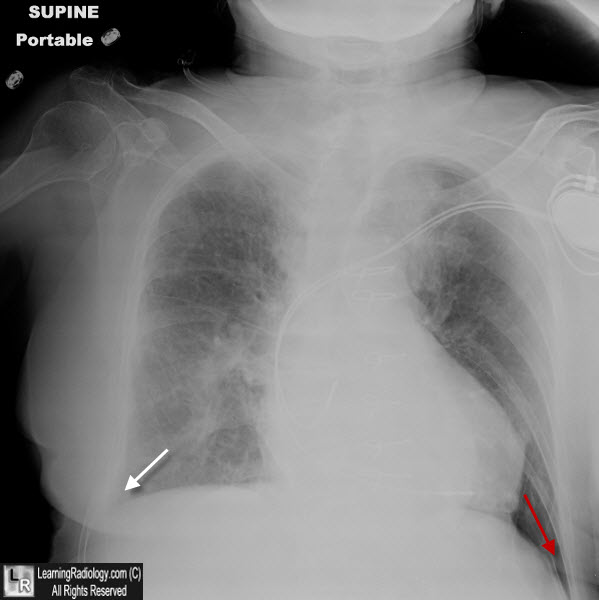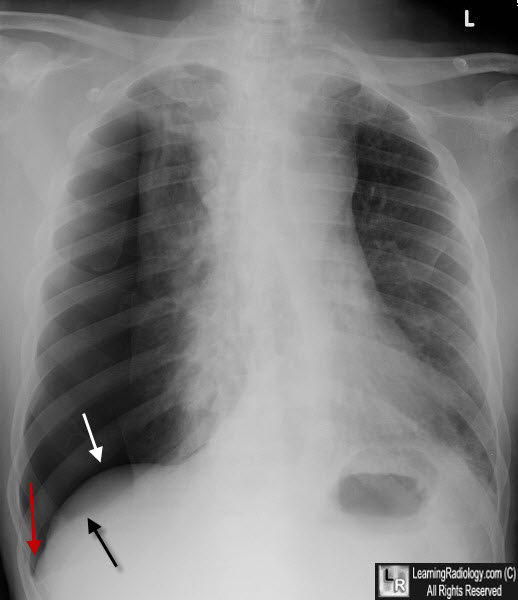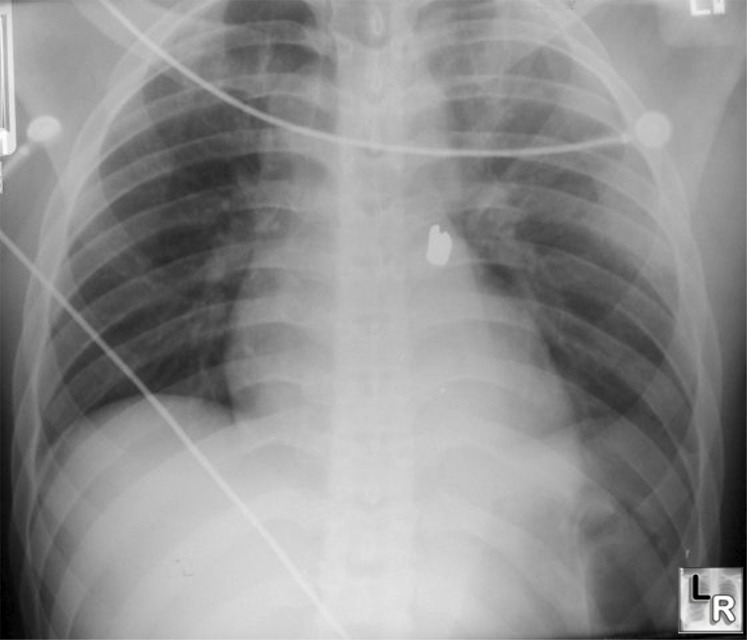|
|
Deep Sulcus Sign of Pneumothorax
Double Diaphragm Sign of Pneumothorax
General Considerations
- Seen on a supine chest radiograph, it is a sign, and may be the only sign, of a pneumothorax
- In the supine position, air rises to the anterior and inferior portion of the thorax, first medially and then laterally
- The air may cause the costophrenic angle on the side of the pneumothorax to project more inferiorly than the costophrenic angle on the opposite side
Imaging Findings
- Deep, lucent, ipsilateral costophrenic angle on supine chest radiograph
- Double diaphragm sign may also be seen on supine radiographs in patients with pneumothorax due to an interface of the dome (highest part of the hemidiaphragm) and the anterior costophrenic sulcus and the hemidiaphragm

Left pneumothorax-deep sulcus sign. Lucency at left costophrenic angle (red arrow) which projects well below the costophrenic angle on the opposite side (white arrow) is the "Deep sulcus sign" indicating the presence of a pneumothorax on a supine radiograph of the chest

Double Diaphragm Sign of Pneumothorax. Air in the right hemithorax displaces both the dome (white arrow) and the anterior costophrenic angle in this patient with a large, right-sided pneumothorax. There is also a deep sulcus sign present (red arrow).

Left pneumothorax-deep sulcus sign. Lucency at left costophrenic angle which
projects well below the
costophrenic angle on the opposite side is the "Deep sulcus sign"
indicating the
presence of a pneumothorax on a supine radiograph of the chest
(Bullet is seen overlying the heart)
|
|
|